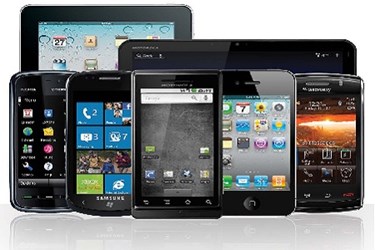"Braidio" Allows Dynamic, Efficient Power Sharing Between Wireless Devices
By Jof Enriquez,
Follow me on Twitter @jofenriq

A prototype radio technology dubbed “Braidio” (for braid of radios) could help extend the battery life of small, mass-market mobile devices like fitness trackers and smartwatches by hundreds of times by tapping the energy of larger devices nearby.
Braidio operates like a standard Bluetooth radio when a device has sufficient energy, but operates like Radio-Frequency Identification (RFID) tags when energy is low, offloading energy use to a device with a larger battery when needed, according to The Recorder. This preserves the battery of the smaller device longer.
For example, when a smartwatch and smartphone are equipped with Braidios, and in spite of the battery asymmetry between these devices, they can work together to proportionally share the energy consumed for communication. Braidio can make them power-proportional because the technology allows dynamic carrier offload: the ability to dynamically switch the transmission carrier between the transmitter and receiver.
"We take for granted the ability to offload storage and computation from our relatively limited personal computers to the resource-rich cloud. In the same vein, it makes sense that devices should also be able to offload how much power they consume for communication to devices that have more energy," said professor Deepak Ganesan, who leads the team of computer science researchers at the University of Massachusetts Amherst, in a news release.
However, for dynamic carrier offload between smaller and bigger devices to be practical, the researchers had to utilize passive methods to cancel self-interference, which paved the way for the low-power, yet high-performance, end-to-end design of Bradio.
The UMass researchers shared the following test results in a paper presented recently at the Association for Computing Machinery's special interest group on data communication (SIGCOMM) conference in Florianopolis, Brazil.
- Braidio can support transmitter–receiver power ratios between 1:2546 to 3546:1 and enables a huge dynamic range of asymmetry to suit a wide range of energy budgets between end points.
- Braidio is low-power and consumes between 16uW – 129mW across the different modes, and is small form factor, making it practical for a range of mobile devices from laptops to smartwatches.
- Braidio increases the total bits transmitted by several orders of magnitude when compared with Bluetooth, particularly when there is significant asymmetry in battery levels.
Testing demonstrated that a Bradio-equipped device with a smaller battery extended its battery life up to 400 times compared to conventional Bluetooth. Wireless technologies like Bradio also can influence the design of future wearables and gadgets, according to the UMass team.
"Wearable devices are often bulky due to large batteries needed for adequate battery life. Perhaps such energy offload techniques can reverse this trend and enable thinner and lighter devices," Ganesan said in the news release.
